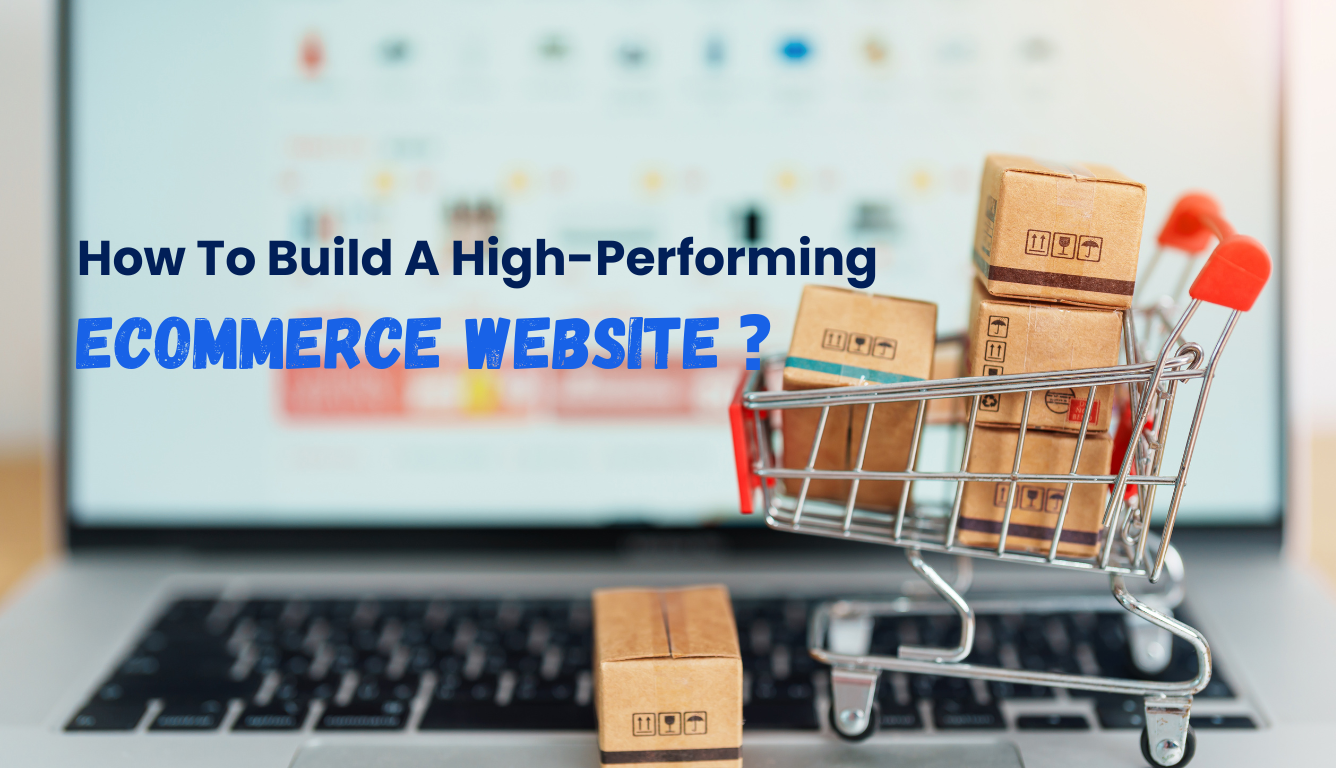







A website is the virtual front face of the business that reflects your brand and services to customers. An eCommerce website is a constructive platform that connects buyers to sellers for purchasing products and services contrary to traditional means. It is a one-stop platform that facilitates customers’ and merchants’ transactions over the internet conveniently. With an online store, you can improve the sales cycle, enhance customer experience, and boost conversion rates. You can stay ahead in this competitive trend with your e-commerce platform to attract potential customers and turn visits into a positive sale. So, here’s how to build a high-performing eCommerce website in 2025 based on your niche.
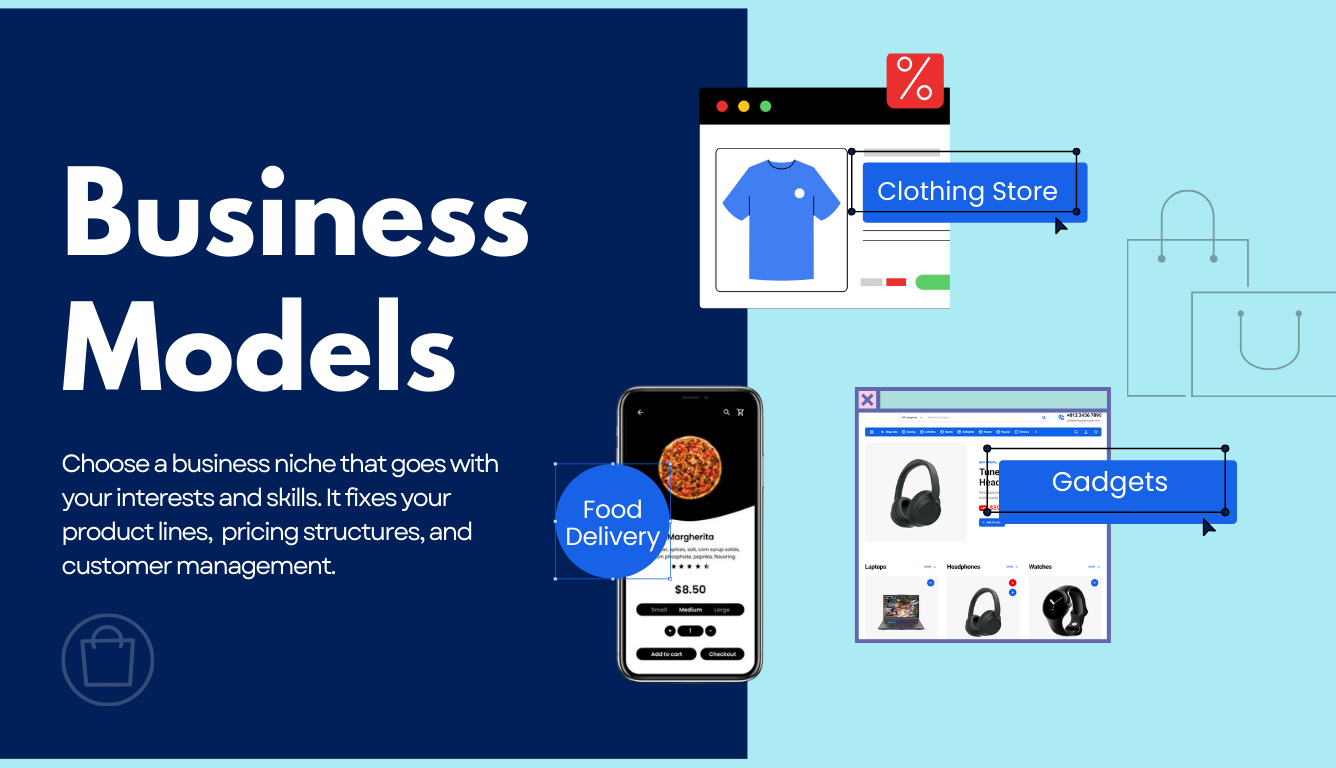

Before developing an eCommerce store, you must determine your business model and target audience. Defining your products and services helps you identify your customers and establish your brand value. These are the common examples of business models that might help you fix your product lines, pricing structures, and customer management.
In this business model, you don’t need to connect with middlemen or intermediaries to sell your products and services. You can directly reach your customers through the website.
A standalone eCommerce platform that facilitates retailers to connect with customers to sell their products and services. Buyers can search for the best-sellers according to their needs in a single place. You can provide multivendor selling opportunities to enlist several businesses on your website with a user profile, product listing categories, product reviews, and social media connectivities. A few examples of online marketplaces are Amazon, Etsy, eBay, and more.
It is another eCommerce business model that doesn’t need a seller to manage inventory and order shipping. Customers can place orders on your site and pay directly. You need to pass the order details to a 3rd-party vendor to deliver the order to the respective customer. It is a hassle-free and convenient method for small-scale businesses. Printify is a popular dropshipping supplier that offers print-on-demand services and handles everything till product shipment.
Keep your products and services on a monthly rental for your loyal customers. Buyers can pay a token amount as a subscription charge to purchase a product from your online store. It helps you strengthen your bond with existing customers.
Building an engaging eCommerce website depends on several factors, such as business model, target audience, website development platform, and other technological components. So, what strategy would most help an e-commerce business drive traffic to their websites like Amazon, eBay, Alibaba, and more? Here are a few key considerations that might help you create a high-engaging e-commerce store with minimum investment.
The initial step of setting up an eCommerce website is to select a meaningful and unique domain name related to your business services. A few widely used domain extensions for eCommerce sites are ‘.com’, ‘.store’, and ‘.shop’. You can also use location-based domain names or ccTLDs like ‘.aus’ and ‘.us’ to specify your business region.


Next, it comes to a trustworthy hosting provider that keeps your eCommerce site secure and accessible. Never compromise on hosting, as it handles all operations of your website, such as customer data, transactional details, and vital information about your business. It provides scalability to control high traffic and improves loading speed without impacting the site’s performance. Use an SSL certificate for your eCommerce site to protect customers’ financial and personal data. Google and other search engines also recommend SSL-certified websites to their visitors.
Implementing a constructive web development platform is essential to run your eCommerce site seamlessly. Be it a CMS or custom-coded platform, a reliable eCommerce platform with appropriate web tools and technologies expands site customizations, integration capabilities, and other functionalities. WooCommerce is one of the best open-source eCommerce resources that work smoothly with WordPress compared to other platforms. It works smoothly with all WordPress-based themes. Here are a few selected WP eCommerce themes for your business.
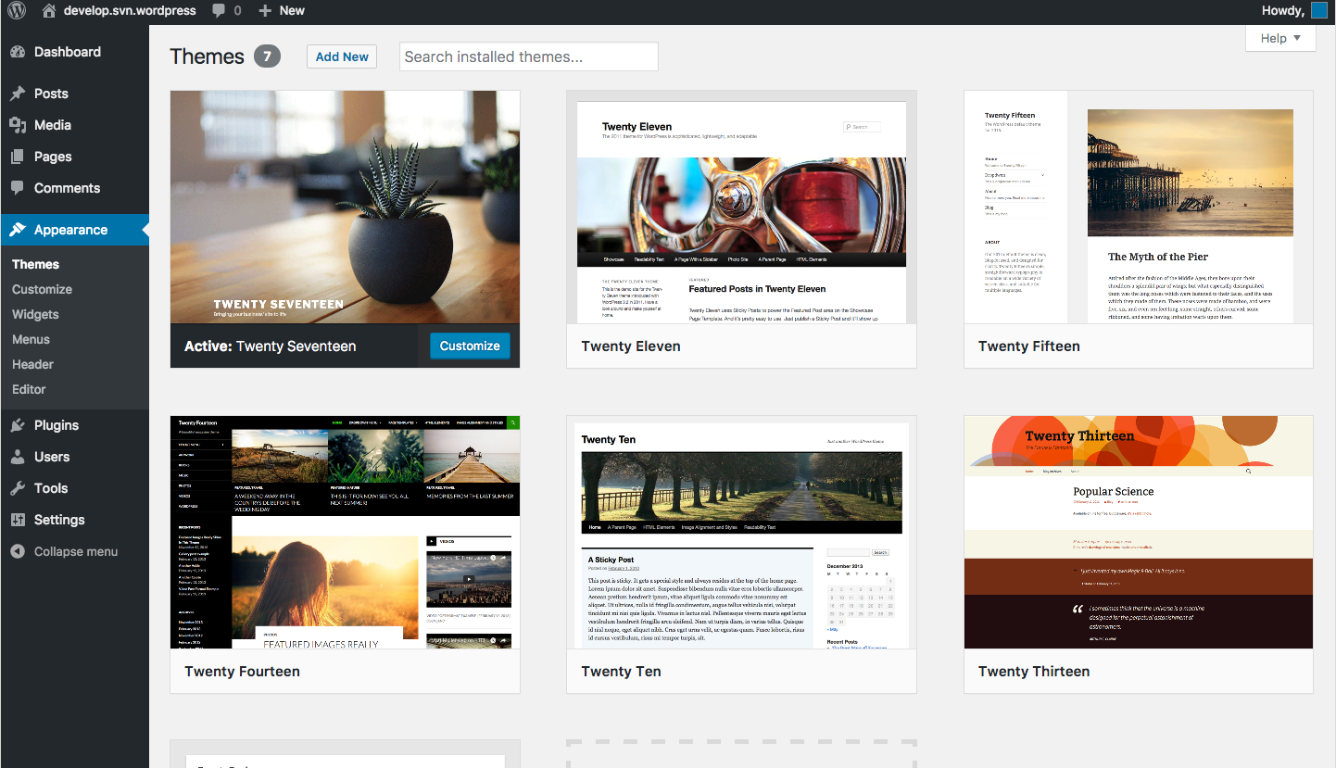

The key benefits of using WooCommerce are easy modification, high scalability, a vast plugin ecosystem (payment gateway, shipping, inventory, marketing tools), and better community support. Additionally, it is a cost-effective platform that allows users to pay only for their hosting charges and plugins. On the other hand, Shopify and other e-commerce platforms have monthly subscription fees with restricted features.


After finalizing the right platform, the next phase is to customize or design your e-commerce store. With the help of a website builder and template-based themes, you can build a site without coding or technical knowledge. As a store owner, you also want to give a personalized touch to your site with a user-friendly interface. Hence, it’s essential to keep a few things in mind while designing your web store:
For any website, keeping simple navigation helps your visitors to scroll web pages at ease. Customers may move to other websites or press the back button if they find it difficult to browse your web pages.
It is a fundamental element for designing your eCommerce storefront. A responsive design approach focuses on multi-device compatibility, page design consistency (fonts and colours), image size, flexible grids, media queries, etc. Mobile-friendly sites have higher chances of online traffic, quick accessibility, and better user experience.
A few site builders or themes may not provide customization features. It is necessary to tweak page designs, colours, fonts, and other components that fit your brand. For example, changing the product display and images of the individual product based on availability gives your customers a clear view. WordPress CMS offers a drag-and-drop facility and quick customization options using several plugins according to your requirements.
An e-commerce website is not only about having a Home page, About us, and Contact us pages. To generate better leads from your site visitors, you need to keep relevant information about your products and services. Here are some web pages that you can add to your eCommerce website to attract your target audience:
Interlinking these pages helps you improve your customer’s navigation. For instance, defining your product return and refund policies keeps everything transparent between you and your customers. It builds trust and intensifies your customer retention rate. Hence, add pages based on the product lines and services you provide.
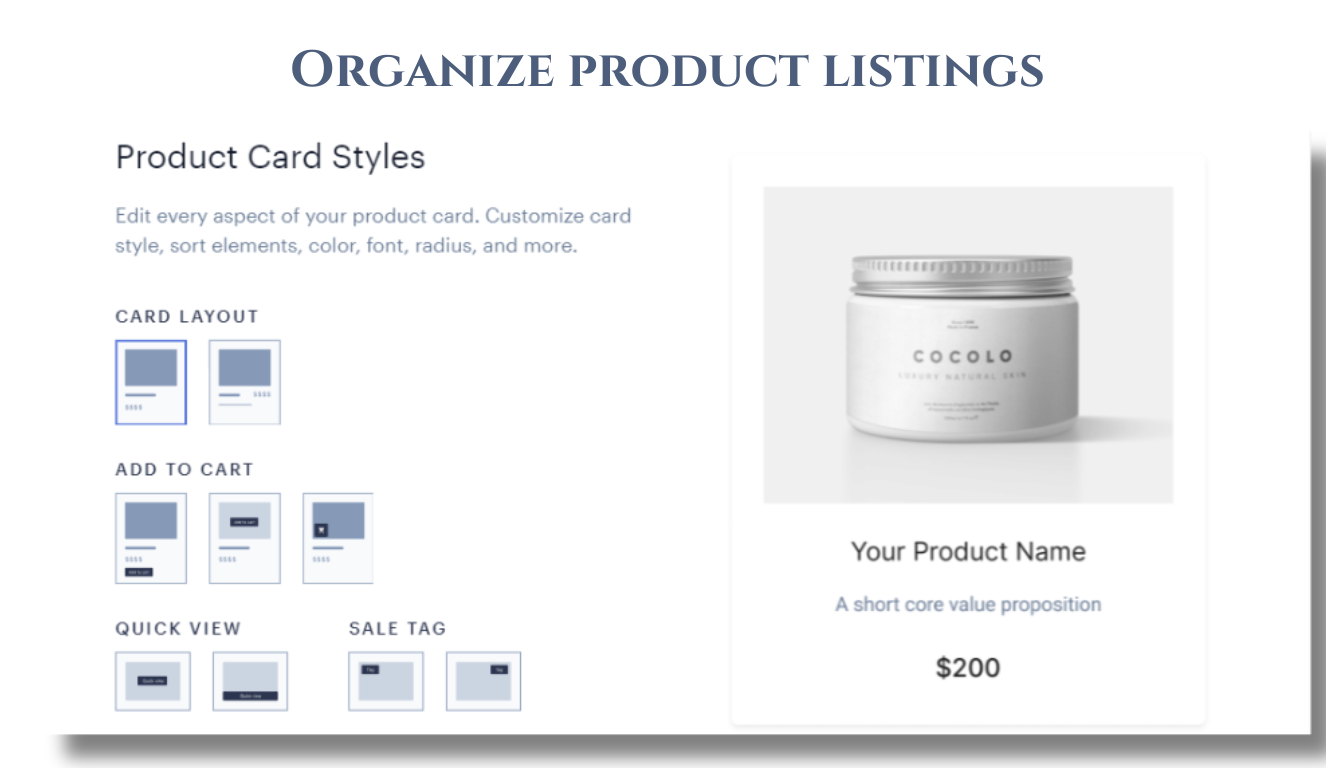

From adding new products to shopping cart functionalities, organizing your product listings is a priority check for eCommerce website development. This is how your customers get to know about your product varieties and services. Here’s a checklist that might help to classify your product listings.
Similar to a physical store, you can also add categories for your products. For instance, your web store consists of multiple products like clothing, groceries, books, and more options. You can arrange these items separately under specific categories with search filters, price ranges, and brand names. This helps your customers to find the best results based on their budget and preferences. You can also put featured items to entice customers and enhance their shopping paths.
You need to be attentive to your stock inventory. It is important to update your stocks according to the product availability. For example, your store has various types of product units categorized according to colours, sizes, and materials. You can mark product quantities and more details about them to help your customers get the available products easily.
The most essential segment of an eCommerce website is how well you describe your products to your customers. Your product descriptions highlight usefulness, material quality, colour, measurement, and other details. Hence, try to avoid cliches and provide short, informative, concise, and real descriptions of products. It is better to keep keyword-specific SEO-friendly product titles and descriptions to increase search visibility and page ranking. Follow these questions while you write product descriptions:
Using high-quality and attractive images of your products engages more customers in your e-commerce store. A visitor gets an idea about your product’s look and quality from images. Hence, consider these factors when you place photos of your products:
Images are the virtual representations of your products. Try to use high-definition and vibrant images that show all angles of your products.
Optimize image quality and keep the size of images intact that fit in your site’s gallery. Using too many or unnecessary images may create a diversion.
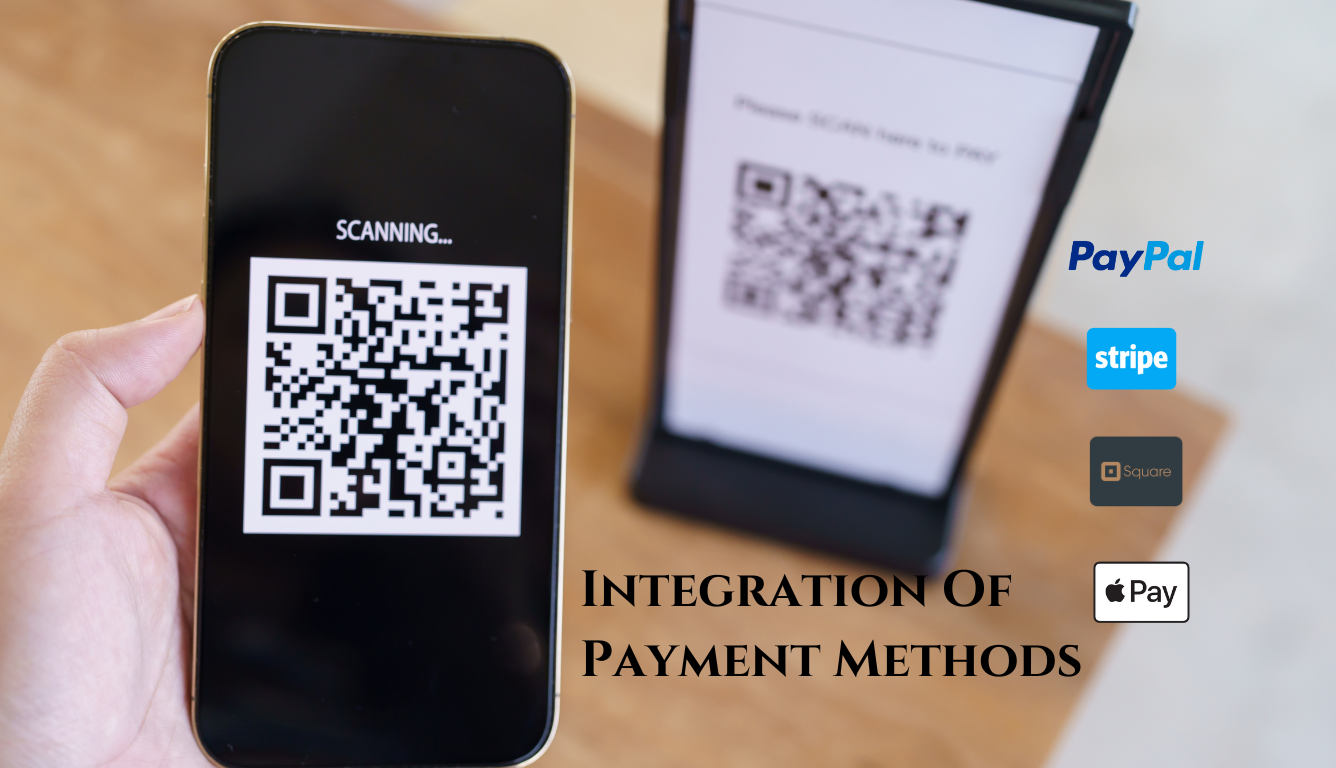

The most indispensable phase of building an eCommerce website is to integrate an online payment system to complete a shopping transaction. An online shop owner needs to add a legitimate and user-friendly payment method for their customers to close the sale. If your payment process is too complicated, it may lead to cart abandonment. Here are a few common online payment methods widely accepted in the eCommerce market:
Using this method, you can directly charge money to your customers based on their shopping transactions. You can send a payment link to customers through texts, emails, and social media platforms. Customers can directly process the amount on your site using a debit or credit card without adding 3rd-party vendors.
Here, you can integrate a payment gateway that hosts the front-end side of the payment transaction. It collects the payment details and processes them to an external payment gateway vendor. After validating the information, the merchant receives the payment from the issuing bank, and the buyer gets a receipt. Examples of trustworthy payment gateways are Stripe, PayPal, Authorize.Net, Square, etc.
Buyers these days prefer quick and secure transactions. Therefore, digital wallets and mobile payments through QR codes and mobile apps like Google Pay, Apple Pay, and more are convenient means.
You can also offer Cash On Delivery (COD) and Buy Now, Pay Later options for selling physical products. Always check customer reviews, PCI compliance, ease of use, and subscription fees before adding a payment gateway.
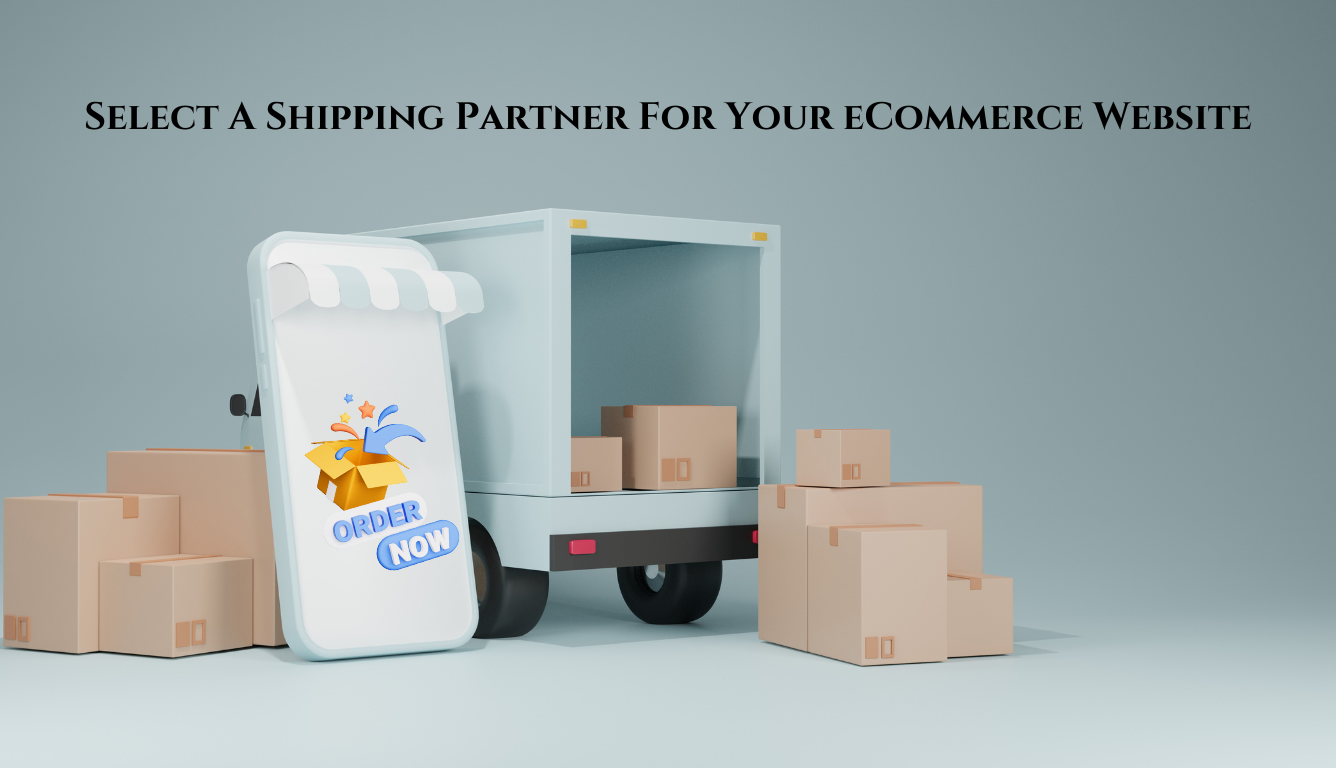

After completing the checkout process, you are responsible for delivering the product to your customer. Hence, pick the right and reliable shipping partner for your e-commerce store. So, decide your delivery solutions based on the products and services you sell. Before you select a shipping vendor, think about these factors:
A shipping policy clarifies the delivery charges and carrier details. You need to decide whether you want to keep a flat rate, variable fee, or free delivery. The shipping rates may differ with your selected delivery partner. You can also keep different shipping rates based on the customer’s geographical location and the weight of the purchased product. Hence, you fix the rates accurately according to the shipping zones (international, national, and local).
You can use multiple or a single shipping method to deliver your products. The shipping method depends on the type of product you sell and the customer’s location. If you sell digital products, then transfer them through an email link. For physical products, you can consider 3rd-party resources or in-house delivery agents. You may also use the dropshipping method to avoid overhead costs and hassles of shipping complexities.
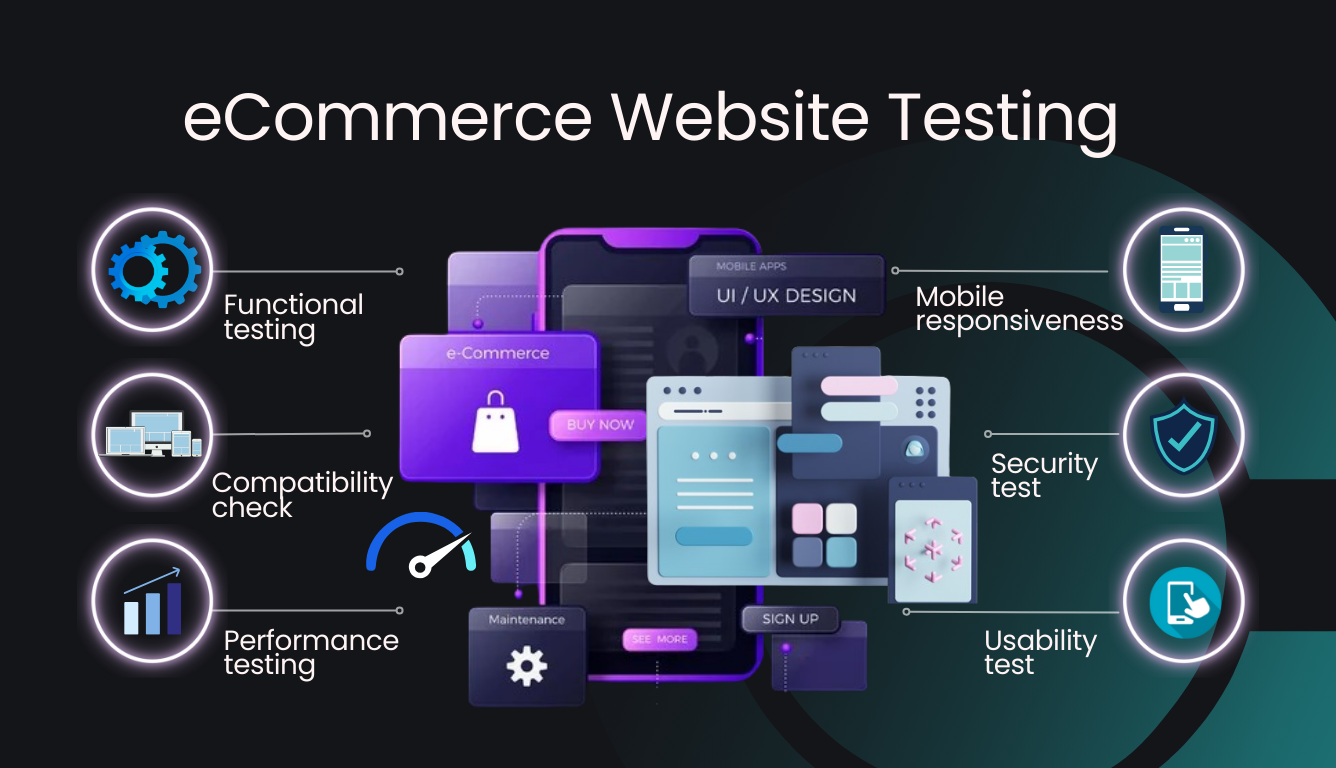

Whether you use a custom-coded platform or WordPress CMS for your eCommerce website, preview and test the website functionalities before launching. You can validate your website performance through these common testing methods:
It is the primary testing method that helps you determine the functional issues or glitches. Through this process, you can identify the core errors in coding or critical bugs in your site or applications. It comprises several sub-testing methods, such as unit tests, smoke tests, integration tests, and more.
This process evaluates the performance level of certain software under specific conditions. It includes stability checks, loading speed, data-processing speed, responsiveness, etc. The performance test ensures the application operates seamlessly every time.
An eCommerce website must run smoothly on every browser. With a cross-browser compatibility test, you can check the several technical variances of your site across multiple devices. To perform this testing method, you can hire a QA team to analyze the site’s compatibility with different OS and performance in real-time.
Security testing targets to identify vulnerabilities in your eCommerce site through several processes. It is crucial for an eCommerce platform to safeguard customer’s personal data from hackers. Here are some potential areas that you may need to focus on, such as SQL injection, cross-site scripting, and data privacy from unauthorized sources.
This is a process that tallies two versions of a web page to validate the better one. It optimizes your e-commerce site for better conversions and user engagement. A/B testing checks web page variations by comparing their designs, content, and layouts. It also measures user interactions with various web page versions to identify which components, like CTAs, hyperlinks, images or texts, perform better.
Additionally, you need to test all your product listing pages, shopping cart, checkout page, payment methods, mobile responsiveness, contact forms, delivery settings, page links, and marketing tools. If your e-commerce site lacks in any area, it may affect your business operations.
Developing a high-performing eCommerce website from scratch involves several technological elements and effort. Getting a constructive e-commerce platform is not only for selling products and services. It helps you shape your business by promoting a brand name, expanding customer reach, and converting visitors to a genuine lead. Following these development guidelines might help you design your own eCommerce store. If you need any assistance regarding eCommerce website development, let us know in the comment section.
Website Development | Mobile App Development | Application Development
We will definitely get back in touch with you over mail within 12 Hours.
In-case you have not heard from us within 12 hours, kindly check your spam once.
I'm a software consultant. I've 7+ years of industry experience. I'd love to connect with you and brainstorm your custom software needs. It's my responsibility to find you the best solution.
ANAND GUPTA
Drop your details and we'll get in touch with you within 12 hours.
Reach us for
Talk to us